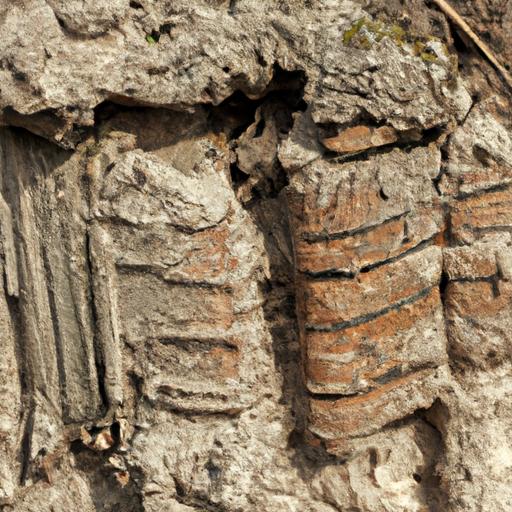Importance of Stem Walls in Construction

Stem walls play a crucial role in construction projects, providing essential support for a building’s foundation and protecting against moisture and water damage. Typically constructed using concrete or masonry, these walls are placed above the building’s footing to transfer the weight of the structure to the foundation, ensuring stability and strength.
A Brief History of Stem Walls
Stem walls have a rich history, dating back to ancient civilizations such as the Egyptians, Greeks, and Romans. Today, they have become a standard practice in both residential and commercial construction projects.
Understanding Stem Walls: Definition and Types
A stem wall is a vertical wall made of concrete or masonry that supports a building’s foundation. It is typically 6 to 24 inches in height and is placed above the footing. There are several types of stem walls, each with unique characteristics and advantages:
T-Shaped Stem Wall
The T-shaped stem wall, resembling the letter T when viewed from above, is the most commonly used type. It is suitable for areas with stable soil and moderate to low seismic activity.
Frost-Protected Stem Wall
Designed for areas with cold climates and high frost depths, the frost-protected stem wall prevents frost from penetrating the foundation.
Slab-On-Grade Stem Wall
Ideal for areas with expansive soil conditions, the slab-on-grade stem wall prevents soil expansion and contraction that can damage the foundation.
Selecting the right type of stem wall for your construction project is essential. Factors such as soil conditions, climate, and seismic activity should be considered. Consulting a qualified engineer or contractor can help ensure the stability and longevity of your building’s foundation.
Benefits of Using a Stem Wall
Considering the use of a stem wall in your construction project offers several advantages, including:
Increased Stability and Strength
Stem walls provide a solid and robust base for your building’s foundation, ensuring it remains stable and secure. This stability prevents potential shifting or settling issues that can lead to costly repairs in the future.
Protection Against Moisture and Water Damage
By elevating the foundation above the ground, stem walls act as a barrier against moisture and water damage. They prevent water from seeping into the foundation, making them especially valuable in areas with high precipitation or flood risks.
Improved Insulation
Stem walls create a gap between the building and the ground, which can be filled with insulation. This additional layer of protection helps regulate temperature changes and reduces energy costs.
In summary, stem walls offer increased stability and strength, protection against moisture and water damage, and improved insulation. By incorporating a stem wall into your construction project, you ensure that your building is strong, durable, and protected against the elements.
How to Build a Stem Wall
Building a stem wall requires careful planning and attention to detail. Here is a step-by-step guide:
Step 1: Site Preparation
Choose a leveled and graded location for your construction project. Excavate the site to the desired foundation depth.
Step 2: Footing
Pour the concrete footing, which serves as the base layer supporting the stem wall.
Step 3: Forms
Construct wooden or metal forms for the stem wall. Ensure they are level and plumb.
Step 4: Reinforcement
Install steel reinforcement bars (rebar) within the stem wall forms to enhance stability and strength.
Step 5: Pouring Concrete
Evenly pour and distribute concrete into the forms, using a vibrator to eliminate air pockets and compact the concrete.
Step 6: Curing
Allow the concrete to cure for at least 24 hours before removing the forms.
Essential equipment and materials for building a stem wall include a concrete mixer, wheelbarrow, trowel, float, rebar cutter, and formwork. You’ll also need concrete, rebar, and formwork materials.
Common Mistakes to Avoid During Construction
To ensure a sturdy and stable stem wall, it’s crucial to avoid common construction mistakes:
- Incorrectly placing rebar.
- Uneven distribution of concrete within the forms.
- Failing to properly level and plumb the forms.
- Insufficient curing time for the concrete.
By following these steps and avoiding these mistakes, you can ensure a reliable stem wall that provides the necessary support for your construction project.
Maintenance and Repair of a Stem Wall
Regular maintenance is crucial for preserving the longevity and functionality of a stem wall. Here are tips for maintaining and repairing a stem wall:
How to Maintain a Stem Wall
- Regularly inspect the stem wall for cracks, bulges, or other signs of damage.
- Clean the stem wall to prevent debris buildup and moisture damage.
How to Repair a Damaged Stem Wall
- Identify the cause of the damage, whether it’s water damage, soil movement, or construction issues.
- Repair the damage using appropriate techniques and materials. Consult a professional for more extensive repairs.
Tips for Preventing Damage to a Stem Wall
- Ensure proper drainage around the stem wall to prevent water accumulation.
- Maintain regular inspections and cleaning to identify and address potential issues promptly.
- Adhere to proper construction practices during the initial building phase.
Conclusion
Stem walls are indispensable components in any construction project. Their primary function is to provide stability, support, and protection against moisture and water damage. This comprehensive guide has explored the definition, benefits, construction, and maintenance of stem walls. By following these guidelines, you can ensure a strong and secure foundation for your construction project.
Remember, selecting the right type of stem wall is essential. Consider factors such as soil type, climate, and building materials. If uncertain, consult with a professional builder or engineer for guidance.
At walltipss.com, we understand the significance of a strong foundation in construction projects. Our aim is to provide you with the latest tips and tricks for a successful building endeavor. Whether you’re a homeowner or builder, we’re here to assist you every step of the way.

